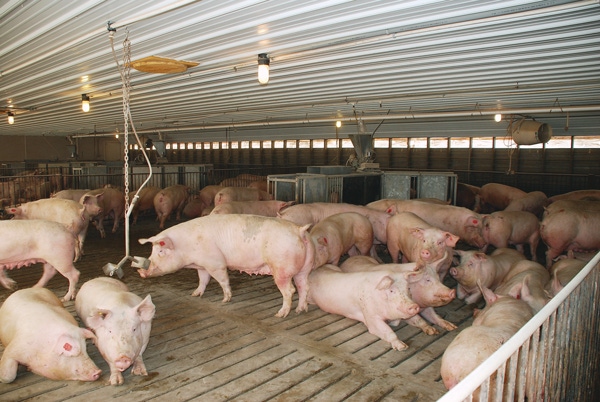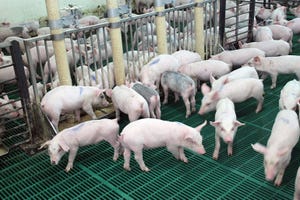Why is sow lameness such a big deal? Animal welfare has always been and continues to be a priority for the swine industry, according to Tim Loula, DVM, Swine Vet Center, St. Peter, MN.

Why is sow lameness such a big deal?
Animal welfare has always been and continues to be a priority for the swine industry, according to Tim Loula, DVM, Swine Vet Center, St. Peter, MN.
Animal activists are also watching and taking undercover videos that make proper animal care even more important than ever, he says at the Feet First Sow Lameness Symposium in Minneapolis, MN, sponsored by Zinpro.
Actions by those animal activists are pressuring producers to put more sows in pens. Sows in pens require: better leg structure, better bone strength, better hoof/sole and more athleticism, Loula points out.
Many retrofitted barns will have slotted floors that are not meant for pens – and will be hard on feet and legs.
Plus, mixed sows in pens will fight, compounding soundness issues, Loula explains.
Genetic changes have fueled today’s prolific sows to farrow up to 20 or more total piglets and wean sometimes as many as 15 piglets. Yet sow nutrition research lags. Sows are fed diets rarely fed before, based on little or no nutritional research, Loula says. Market weight pigs in some operations have averaged 300 lb., and pigs are no older than before, due to improved average daily gain.
Those advancements place added pressure on feet and leg structure and negatively affect the number of deads and culls and affect parity distribution, all of which impact sow longevity, he says.
Gilt feet are showing up with lots of lesions and rear feet and leg injuries due to larger finishers with more room to run on worn-out floors that have sharp slats.
Loula says corrective action should include pig observation for infectious arthritis. Vaccinate aggressively for erysipelas. Treat for Mycoplasma hyorhinis/hyosynviae. Use feedgrade medications. Observe for Actinobacillus suis, Haemophilus suis and Strep suis, which can also cause lameness issues. Also:
Follow scoring systems to evaluate conformation and structural soundness for front and rear legs.
Blood test gilts for vitamin D levels, and supplement diets to improve the nutritional levels.
Make sure to properly trim feet on a regular basis.
Cull unsound females and breed/buy robust females.
Keep floors dry, repair/replace old chutes and utilize sick pens to medicate and manage lame females, Loula says.
Foot baths and hoof mats can also improve soundness.
“It is an important time for the swine industry. We are being critiqued daily. We must quickly minimize the issues. Sounder legs and better feet will minimize welfare concerns and lead to greater profit,” Loula assures.
About the Author(s)
You May Also Like





